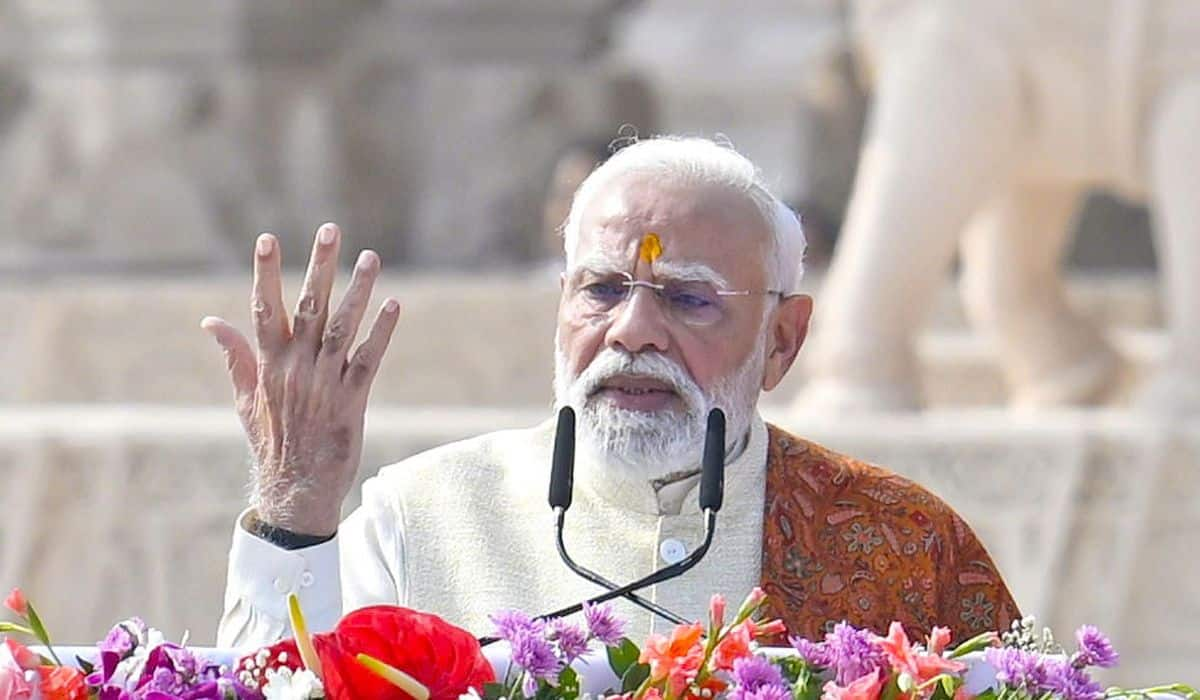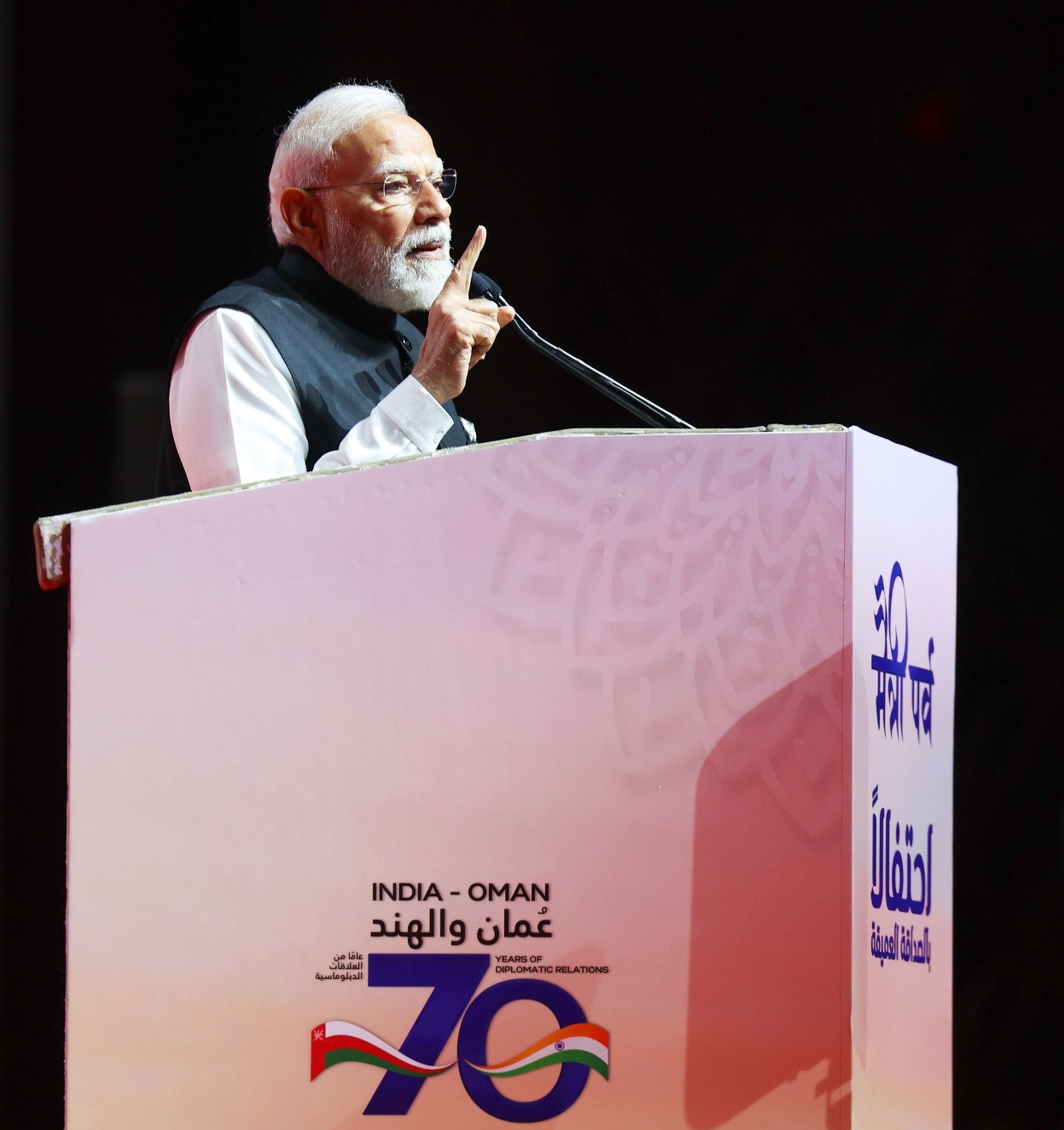My colleague in the Union Cabinet, Shri Hardeep Singh Puri ji, Chief Minister of Delhi, Shri Arvind Kejriwal ji, Managing Director, DMRC, Shri Mangu Singh ji, senior officials of the ongoing Metro projects in the country, and my dear brothers and sisters.
I had the privilege of inaugurating the Magenta line about three years ago. Today, on the same route, I have got the opportunity to inaugurate the country's first fully automated Metro, which we also colloquially call 'Driverless Metro'. This shows how fast India is moving towards a smart system. Today, the Delhi Metro is also getting connected with the National Common Mobility Card. It started from Ahmedabad last year. Today, it is being expanded to the Airport Express Line of Delhi Metro. Today's event is an attempt to prepare urban development, urban ready and future ready.
Friends,
It is an important responsibility of governance to prepare the country today for future requirements and to do the work today. But a few decades ago, when the impact and future of urbanization were crystal clear, the country saw an altogether different attitude. There was not much attention to future needs, half-hearted work was done and there was a state of confusion. Rapid urbanization was taking place at that time, but our cities were not designed to deal with its after effects. The result was that there was a huge gap between the demand and supply of urban infrastructure in many parts of the country.
Friends,
Unlike this thinking, the modern thinking says that urbanization should not be seen as a challenge, but should be used as an opportunity. An opportunity in which we can create better infrastructure in the country! An opportunity in which we can improve the ease of living! This difference of this thinking reflects in every dimension of urbanization. The construction of Metro Rail in the country is also an example. The Metro was discussed in Delhi for years. But the first Metro ran because of the efforts of Atal ji. So many experts of the Metro service who are involved in this programme also know very well what was the status of the Metro construction?

Friends,
When our government was formed in 2014, only five cities had Metro rail. Today, 18 cities have Metro rail service. By 2025, we are going to extend it to more than 25 cities. In the year 2014, only 248 kilometres of Metro lines were operational in the country. Today, it is about three times, more than 700 kilometres. By 2025, we are trying to expand it to 1700 kilometres. In 2014, the number of Metro passengers was 17 lakh per day. Now, this number has increased five times. Now, 85 lakh people ride by Metro every day. Remember, these are not just figures; these are evidence of ease of living in the lives of millions of Indians. These are not just infrastructures made from brick stones, concrete and iron, but evidence of the realization of the aspiration of the citizens and the middle class of the country.
Friends,
After all, how did these changes come? The bureaucracy is the same, people are the same, then how did work happen so fast? This was because we saw urbanization as an opportunity, not a challenge. There was never any policy regarding Metro in our country before. Any leader would promise somewhere, any government would announce the Metro to satisfy somebody. Our government made a policy on Metro by coming out of this helotism and implemented it with an all-round strategy. We emphasized on working according to local demands, we emphasized on promoting local standards, we emphasized on the greater expansion of Make in India and we emphasized on the use of modern technology.
Friends,
Most of you know that different cities in the country have different needs, aspirations and challenges. If we were to operate Metro rail on a single fix model, its rapid expansion was not possible. We noted that the expansion of the Metro and the use of the modern modes of transport should be done according to the needs of the people of the city and the professional lifestyle there. That is why different metro rails are being worked out in different cities. I give you a few examples -- RRTS i.e., Regional Rapid Transit System— the magnificent model of Delhi-Meerut RRTS will reduce the distance between Delhi and Meerut to less than one hour.

Metro Light -- Metro light version is being worked out in cities where the number of passengers is low. It is ready at 40 per cent cost of a normal Metro. Metro Neo – Work on Metro Neo is taking place in cities where the passengers are even less. It is ready at 25 per cent cost of the normal Metro. Similarly, there is a Water Metro -- this is also an example of out of the box thinking. Water Metro is now being prepared for cities where there are large water bodies. This will enable better connectivity to cities as well as offer the benefits of last mile connectivity to the people of the nearby islands. The work in Kochi is progressing at a fast pace.
Friends,
We also have to keep in mind that Metro is not just a public transport facility today. It is also a great means of reducing pollution. Thousands of vehicles have been taken off from the roads due to the Metro network, which caused pollution and jams.
Friends,
For the expansion of Metro services, Make in India is equally important. Make in India brings down costs, saves foreign exchange and people in the country get more jobs. While Indian manufacturers have benefited from the standardization of rolling stock, the cost of each coach has now come down from Rs. 12 crore to Rs. 8 crore.

Friends,
Today, four big companies are building Metro coaches in the country. Dozens of companies are engaged in building Metro components. This is helping Make in India as well as the Atmanirbhar Bharat campaign.
Friends,
The use of modern technology is the need of the hour. Now, I have got the opportunity to inaugurate the driver-less Metro Rail. With this achievement today, our country has joined the select countries of the world where there is such a facility. We are also experimenting on a braking system in which 50 per cent of the energy released on brakes goes back to the grid. Today, 130 MW solar power is being used in Metro Rail, which will be increased to 600 MW. Work is also progressing at a fast pace on modern technologies like platforms and screening doors equipped with Artificial Intelligence.
Friends,
It is very important to provide the same standards and facilities for modernisation. The Common Mobility Card at the national level is a major step in this direction. The goal of the Common Mobility Card is very clear. This card will give you integrated access wherever you travel and use any mode of public transport. That is, one card is sufficient everywhere. It will be applicable everywhere.
Friends,
Those who travel in the Metro know how long one had to stand in a queue just to take a token. One is getting late to reach the office or college and then there is the hassle of a ticket. Once you are out of Metro, then one has to buy a bus ticket. Today, when everyone is running short of time, time cannot be lost in travel. We are working in the direction to ensure that such difficulties don’t create hindrance for the people of the country moving from one place to another.
Friends,
It is the responsibility of all of us to use the country's potential and resources properly in the development of the country. Today, the strength of the country is being enhanced by consolidating all the systems. Ek Bhart-Shresth Bharat is being strengthened. Like the One Nation and the One Mobility Card, our government has done many things in the last few years to consolidate systems of the country. One Nation, One FASTag has ensured seamless travel on highways across the country. Unnecessary interference has stopped. There has been relief from jams, the country’s time and losses caused due to delays have been reduced. The One Nation, One Tax, i.e., GST has eliminated tax jams across the country; there is a uniform system of direct tax. One Nation, One Power Grid is ensuring adequate and non-stop availability of electricity in every part of the country.
The loss of electricity has been reduced. The One Nation, One Gas Grid is ensuring seamless gas connectivity to those parts of the country away from the sea, where gas-based life and economy used to be a dream. Millions of people are taking advantage of the One Nation, One Health Insurance Scheme i.e., Ayushman Bharat, not only in one state but anywhere in the entire country. One Nation, One Ration Card has also relieved the citizens migrating from one place to another from making new ration cards. One ration card has made it possible to facilitate cheap ration anywhere in the country. Similarly, with new agricultural reforms and systems like e-NAM, the country is moving towards One Nation, One Agriculture Market.
Friends,
Every small city in the country is going to be a big centre of India's economy of the 21st century. Our Delhi is also the capital of the country. Today, when India of the 21st century is making a new identity in the world, that grandeur should be reflected in our capital. Being such an old city, there are challenges, but with these challenges, we have to give it a new identity of modernity. Therefore, a number of efforts are being made to give modern shape to Delhi today. In order to increase electric mobility in Delhi, the government has also exempted tax on their purchases.
Whether it is regularization of hundreds of colonies in Delhi or efforts to provide better accommodation to slum families... The old government buildings in Delhi are being made environmental friendly as per today's needs. The old infrastructure is being replaced with modern technology based infrastructure.
Friends,
In Delhi, apart from the old tourist destinations, work is in progress to have new attractions of the 21st century. Delhi is going to be an important centre of international conferences, international exhibitions and international business tourism. For this, the country’s largest centre is coming up in Dwarka. Similarly, while the construction of the new Parliament House has started, a huge Bharat Vandana Park is also being developed. Every such work is also creating thousands of jobs for the people of Delhi and the picture of the city is also changing.
Delhi is the capital of more than 130 crore population and the world's big economic and strategic power, and, therefore, the same grandeur should be reflected here. I am confident that we will all work together to improve the lives of the citizens of Delhi and make Delhi more modern.
Once again, I congratulate the country and also the people of Delhi for the new facilities.
Thanks!




















